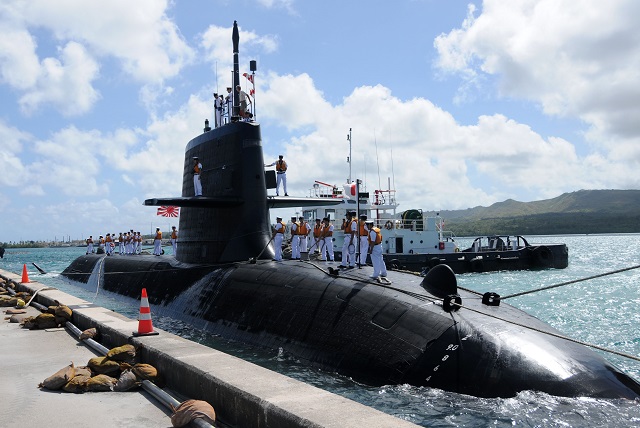Why the Japanese proposal is low risk (part 2)
Posted By
Sumio Kusaka
on April 12, 2016 @ 06:00

Editor’s note: The Strategist has invited all three SEA 1000 contenders to explain their approach to meeting Australia’s future submarine requirement.
The first post in this two-part series explored several key questions pertaining to Japan’s ability to meet Australia’s future submarine needs. Those questions concerned cruising range, internal narrowness and operational lifespan. This second post will further explain the truth about the capability of the Soryu-class and the reasons why the Japanese proposal is low risk.
Is Air Independent Propulsion (AIP) necessary?
A concern has been expressed that since modern submarines are required to spend long periods of time submerged and to secretly evacuate to safer waters, AIP capability is indispensable. Yet it isn’t included in the Japanese proposal.
As a result of incorporating lithium-ion batteries into our submarines that surpass the capabilities of AIP, Japan doesn’t believe that AIP is an indispensable capability for modern submarines.
Japan has experience operating seven submarines installed with AIP systems. But after considering the evolution in lithium-ion battery technology—higher energy density, greater safety, faster recharging times—Japan decided not to install AIP systems on submarines that will be built from 2015 onwards. The new Soryu-class submarine will use lithium-ion batteries instead of AIP as that technology has led to improvements in submerged endurance and speed capabilities, thereby allowing operators to continuously traverse waters using a wider range of possible speed options that simply aren’t available to AIP.
We believe that this new Japanese technology will provide a capability that exceeds that of AIP.
Are lithium-ion batteries reliable?
There’s a concern that lithium-ion battery technology isn’t yet sufficiently developed to use in submarines.
As above, Japan made a decision to install lithium-ion batteries on any submarines to be built from 2015 onwards. Prior to their installation in submarines, our battery technologies have gone through a vigorous and complete verification testing. They’ve been thoroughly evaluated in over 20 different types of tests and no issue has been found concerning their reliability. Those tests include short-circuit tests, shock-resistance tests, drop tests, overcharging/over-discharging tests, seawater soaking tests and heat tests. The results clearly demonstrate that reliability isn’t an issue. With this assurance, we finally decided to install lithium-ion batteries in our own new submarines.
What does submarine cooperation mean for the ‘special strategic partnership’?
An argument has recently emerged in Australia suggesting that deepening defence and security cooperation with Japan would narrow Australia’s strategic flexibility and pose a strategic risk to Australia. But is a point of view that regards Japan as a source of strategic risk for Australia correct? Japan and Australia share the values of democracy, human rights, the rule of law, open markets and free trade, and we have a ‘special strategic partnership’ based on our mutual strategic interests.
Australia, along with a large number of other nations, has welcomed the more pro-active contribution Japan will make to the peace, stability and prosperity of both the region and the world in line with Japan’s ‘Positive Contribution to Peace’ based on the principle of international co-operation. It’s in that context that one should regard the deepening of security and defence co-operation between Japan and Australia.
As has been the case for many years now, Japan and Australia have been deepening security and defence cooperation based on our past 2+2 discussions and agreements. The Australian government’s 2016 Defence White Paper also endorsed the strengthening of security and defence cooperation between Japan and Australia. Our participation in the CEP for the future submarine program is just one part of a much wider and more diverse story. If we were to follow the logic of the argument, which is based on opposition to Japan and Australia deepening our defence and security cooperation, we simply are left asking ‘why?’
Furthermore, Japan regards Australia as a trusted partner which is why it concluded a bilateral agreement concerning the transfer of defence equipment and technology. Under assurances given by Australia based on the agreement, necessary technology will be transferred from Japan to Australia in the event that Japan is chosen as a partner for the future submarine program. The technology transfer will ensure that Australia will be able to possess and exercise its own sovereign control over its submarines.
Sumio Kusaka is the Ambassador of Japan to Australia.
Article printed from The Strategist: https://www.aspistrategist.org.au
URL to article: https://www.aspistrategist.org.au/why-the-japanese-proposal-is-low-risk-part-2/
[1] first post: http://www.aspistrategist.org.au/why-the-japanese-proposal-is-low-risk-part-1/
 Print This Post
Print This Post